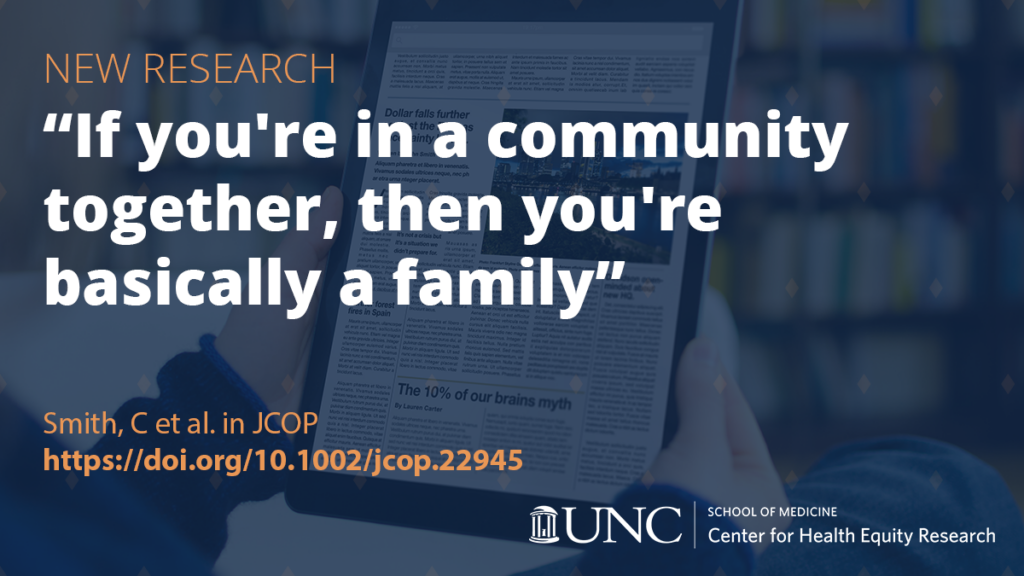by Melissa Marcus
Community. When we hear that word, we might imagine our own homes, neighborhoods, friends and family.
For Black teenagers in rural areas, how they see community can differ from our expectations. A recent paper published in the Journal of Community Psychology aimed to understand how Black teenagers sense connection to where they live.
This study comes out of the same project as another publication about youth summer programs diversifying the public health pipeline. The second paper’s lead author is Cambray Smith, a Research Assistant working with Leah Frerichs, who leads the research team.
Prior studies show that youth have insightful perspectives about their environments. In public health, the voices of Black youth, especially those from semi-rural backgrounds, have often been unheard. That absence fueled the research team’s desire to understand more.
Interviews and maps drawn by the participants were used to gather knowledge. Cambray said, “we found that these young people saw ‘community’ as consisting of both places and people. “
They described their towns and lives, explained things they liked, things that made their towns unique, as well as challenges they faced. Racism, lack of economic opportunities and traveling far to reach important services, like healthcare, are all challenges these Black youth face.
“Most importantly, we found that the young people had clear recommendations for how to improve their communities, and many also described wanting to be part of making a change,” Cambray said.
Importantly, this study centers the voices of youth who are often not consulted on what they may hope for in the future.

